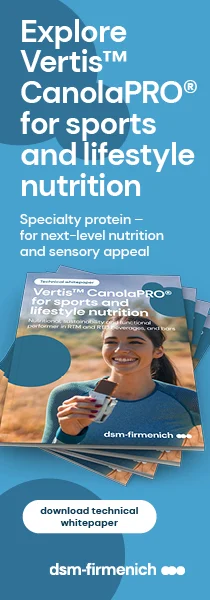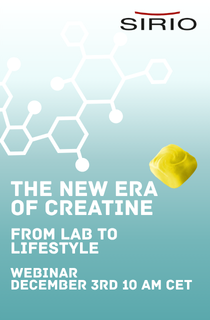“A mindset shift will take time”: NZMP backs PROMISS project targeting malnutrition in seniors
26 Aug 2021 --- Fonterra’s B2B dairy ingredients brand NZMP is backing research to build strategies against malnutrition in seniors. With an estimated 20 percent of seniors not having access to a proper diet, the PROMISS project aims to support the aging European population in keeping healthy and active for longer.
PROMISS stands for Prevention Of Malnutrition In Senior Subjects in the EU. The project aims to provide solid recommendations for those looking to live actively and healthily in their later years.
Speaking to NutritionInsight, Jacqueline Van Schaik, global lead nutritionist, medical and healthy aging team at NZMP, says the findings in the PROMISS project are “in line with existing evaluations that the elderly require higher protein intakes than younger adults.”

 Protein recommendations should become widely adopted and embedded in healthcare, says NZMP.Additionally, the project offers several tools such as the “protein screener” to assess daily protein intake and a recently launched recipe book for various healthy diets for seniors.
Protein recommendations should become widely adopted and embedded in healthcare, says NZMP.Additionally, the project offers several tools such as the “protein screener” to assess daily protein intake and a recently launched recipe book for various healthy diets for seniors.
“The first updated nutrition recommendation guidelines following this science are now being presented in various European countries including the Nordics and recently in Ireland,” explains Van Schaik.
“The evaluation of protein requirements specifically for elderly individuals – as opposed to adults as a broader group – is relatively new, so we expect more data will emerge over time.”
Concentrated efforts to educate
Increased awareness of the role and importance of protein in the diet can be achieved through education, notes Van Schaik. She sees this awareness rising across both health care professionals and the general public.
“The tools developed by the PROMISS team can provide the support to work toward personalized nutrition and health goals. The protein screener gives consumers or their care providers insight into their nutritional status so personalized nutritional goals can be developed.”
For these protein recommendations to become widely adopted, be embedded in healthcare and remain top of mind for consumers, there has to be a concerted effort to continue raising awareness and supporting both HCP and consumer education.
“Such a mindset shift will take time. As a food and nutrition company, we see ourselves as having a key role in helping disseminate this information and champion these messages, which we have already applied to our thinking through the product concepts we develop for customers and the nutrition resources and materials we publish,” Van Schaik underscores.
Chefs and nutritionists join forces
With protein at the core of NZMP’s Active Living portfolio, the company’s focus is to build up nutritional knowledge around the quantitative and qualitative impacts of protein on health.
A good example of this is NZMP’s recipe booklet that has been developed with chefs and nutritionists.  Twenty percent of seniors living at home are currently malnourished.
Twenty percent of seniors living at home are currently malnourished.
“This shows diverse ways to prepare highly nutritious, tasty meals and snacks using a whey-dominant, high-protein high-calorie Oral Nutrition Supplement (ONS). This is also an example of how one product can be applied in multiple ways to personalize nutrition.”
Across the nutrition community, the current scientific approach for malnutrition research generally focuses on energy and protein intake, as these have significant impact on patient outcomes.
“In R&D, we take the complete composition of our products into account, such as reviewing the quality and quantity of protein alongside other macro- and micronutrients. We choose to participate in projects like PROMISS and work with other global academic partners to support the development of scientific evidence to form the basis of future nutritional guidelines, which help consumers to make good nutrition choices,” explains Van Schaik.
While some of these guidelines will apply to the general consumer, others – such as the recommendations seen in PROMISS – are specifically relevant to targeted demographics like the elderly.
“We also have a dedicated focus on specialized nutrition such as the needs of patients in medical settings, where our proteins can play a very key role in the successful creation of technically challenging products like complete nutrition solutions,” Van Schaik further comments.
Raising the bar for recommended senior nutrition
The recommended protein intake per day for seniors has increased. The PROMISS project suggests that seniors should target an intake of 1 g of protein per kilogram of body weight (bw) per day.
This is in line with other recent recommendations that also target higher intake levels than the previously used value of about 0.8 g/kg bw/day.
Importantly, PROMISS recognizes protein as a relevant energy source and specifically to support muscle mass and function, which is associated with higher levels of independent living.
When asked how significant is the 0.8 to 1 g uptick in protein consumption, Van Schaik replies: “If we put this in context for consumers, the average adult weighs about 70 kg, so the change in the recommendation would require an additional 14 g of protein to be consumed daily. This is equivalent to adding more than two eggs or about 3.5 glasses of skim milk to the diet each day, which is not a small amount of food.”
 NZMP expects more data on senior nutrition to emerge over time.“Therefore, 20 percent is a substantial increase and has a significant effect on the total protein intake,” she emphasizes.
NZMP expects more data on senior nutrition to emerge over time.“Therefore, 20 percent is a substantial increase and has a significant effect on the total protein intake,” she emphasizes.
Protein is a requisite across all life stages
Protein intake and the effect on muscle function and mobility has been investigated widely. Over the past years, this has been evaluated and re-evaluated by several expert groups across the globe.
Higher protein intakes in the diet have been linked to increased muscle mass and strength and have shown a positive impact on the performance in activities such as daily living and maintaining independence, concludes Van Schaik.
In a similar move to support the nutritional targets of seniors, Arla Foods Ingredients recently launched a “Healthy Through Life” dairy concept to help manufacturers capitalize on the 40 to 60-year-old healthy aging demographic.
Other research has found that supplementation with beta-hydroxy beta-methyl butyrate promotes increased lean muscle mass in older adults within four weeks.
By Elizabeth Green, with additional reporting from Anni Schleicher















